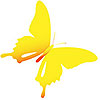Nace en Cochabamba, en 1902. Desde muy joven, incursiona en la fotografía hasta convertirse en un verdadero experto, gracias a la experiencia adquirida en su ciudad natal.
Al estallar la contienda del Chaco, por su conocimiento en la materia, es nombrado jefe de la Sección de Aerofotogrametría del ejército. Es así como se convierte en uno de los pocos fotógrafos de las batallas y acontecimientos de esta guerra.
Su incursión en el cine parece haber sido circunstancial, precisamente por la magnitud de la guerra, pues la única película suya que se conoce, fue precisamente un documental que filma en medio de la lucha, que llamó Infierno verde, también conocida como La guerra del Chaco. Todo el trabajo de filmación de esta película fue realizado por Bazoberry entre los años 1932 y 1935.
Después de la filmación, Bazoberry permaneció durante unos meses en el ejército, y al licenciarse, continuó su carrera de fotógrafo, hasta su muerte.
Luis Bazoberry (1902-1964) was born in Cochabamba, Bolivia. Since he was very young, he experimented with photography until he became a real expert, thanks to the experience he gained in his home town.
When the conflict at El Chaco started, due to his expertise in the field, he was appointed head of the aerial still photography section of the army. Thus, he became one of the few photographers who shot the battles and events of this war.
His career at the movie seems to have been circumstantial, precisely due to the magnitude of the war, since his only well known film is a documentary filmed in the battle field, which he entitled Infierno verde, also known as La guerra del Chaco. All the filmmaking process of this movie was made by Bazoberry between 1932 and 1935.
After finishing Infierno verde, Bazobery stayed in the army for another few months and when he was discharged, he continued his career as a photographer until his death.
References in the multimedia
Infierno verde, 1934, Direction
 “Nuestro objetivo final es nada menos que lograr la integración del cine latinoamericano.
Así de simple, y así de desmesurado”.
“Nuestro objetivo final es nada menos que lograr la integración del cine latinoamericano.
Así de simple, y así de desmesurado”.













